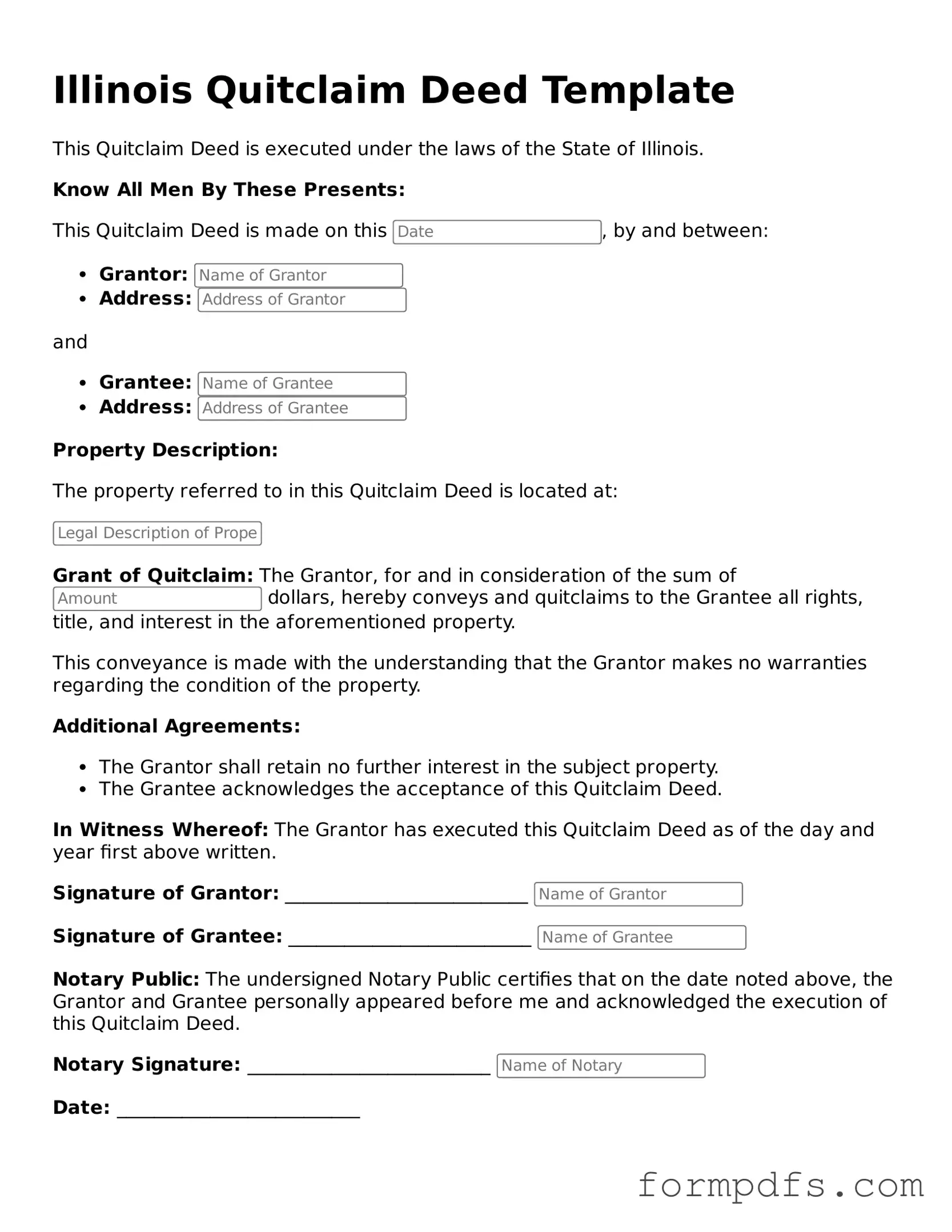What is a Quitclaim Deed in Illinois?
A Quitclaim Deed is a legal document used to transfer ownership of real estate in Illinois. Unlike other types of deeds, a Quitclaim Deed does not guarantee that the property title is free of claims or liens. Instead, it simply conveys whatever interest the grantor (the person transferring the property) has in the property at the time of the transfer. This type of deed is often used among family members or in situations where the grantor is unsure of the property’s title status.
How do I complete a Quitclaim Deed form in Illinois?
To complete a Quitclaim Deed form, you will need to provide specific information, including the names of the grantor and grantee, a legal description of the property, and the date of the transfer. You can find templates online or at local legal offices. It’s essential to ensure that the form is filled out accurately to avoid any issues later. After completing the form, the grantor must sign it in the presence of a notary public to make it legally binding.
Do I need to file the Quitclaim Deed with the county?
Yes, after the Quitclaim Deed is signed and notarized, it must be filed with the county recorder’s office in the county where the property is located. Filing the deed officially updates the public record, reflecting the new ownership. There may be a small fee for filing, and it’s advisable to keep a copy of the filed deed for your records.
Are there any tax implications when using a Quitclaim Deed in Illinois?
While transferring property using a Quitclaim Deed itself does not typically trigger a tax event, it’s important to consider potential tax implications. For example, if the property is being transferred as part of a sale, capital gains tax may apply. Additionally, property taxes may change based on the new ownership. It is wise to consult with a tax professional or attorney to understand any tax responsibilities related to the transfer.
